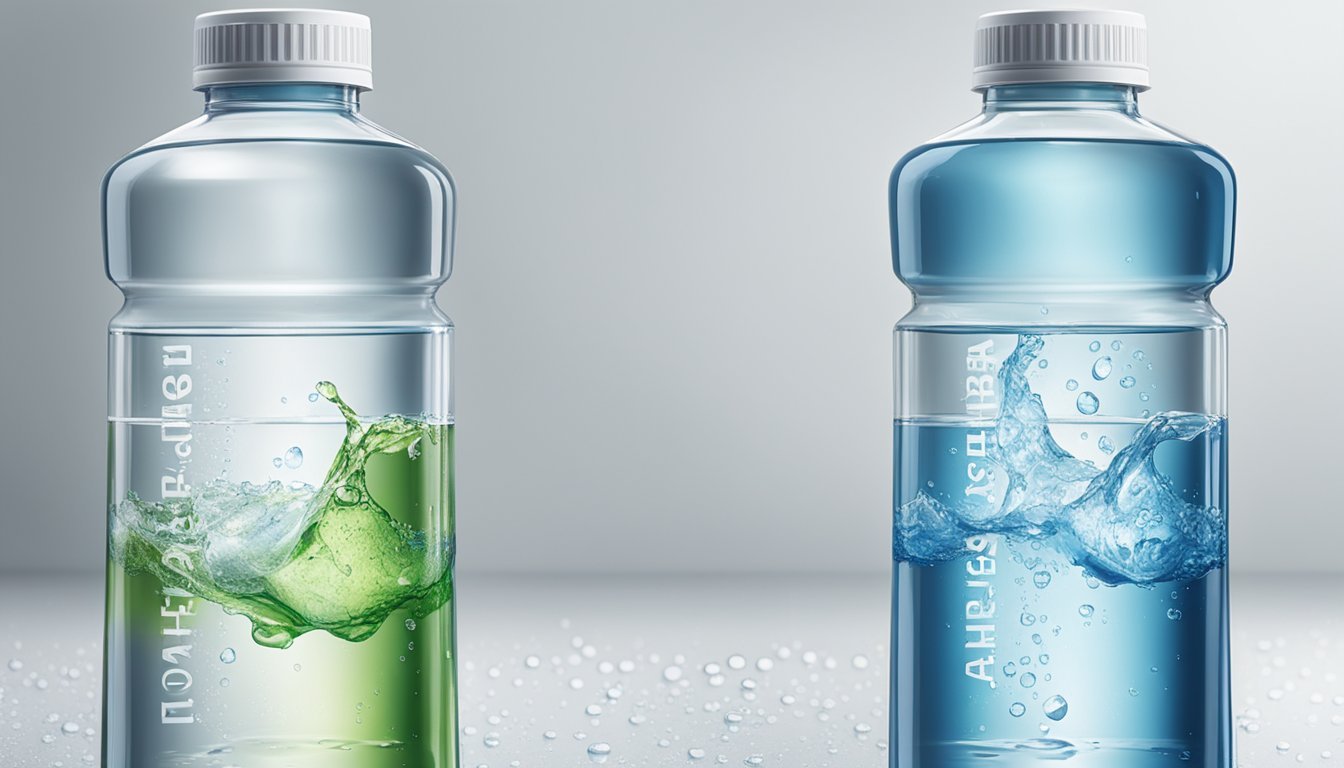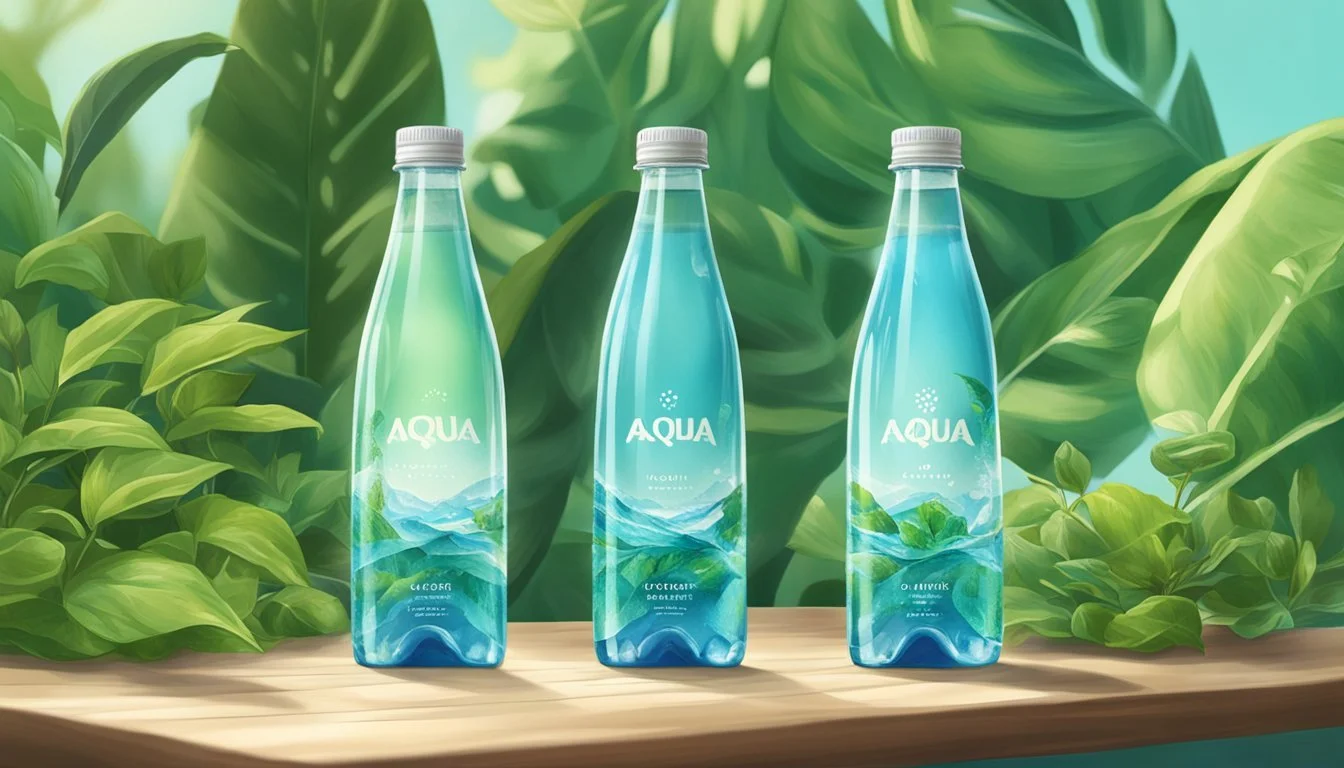Aqua Carpatica vs. Flow
Which Bottled Water is Better?
Choosing the right bottled water can be a challenge, especially with so many options on the market. Aqua Carpatica and Flow both offer distinct benefits that cater to consumers looking for pure and clean hydration. Aqua Carpatica stands out for its naturally nitrate-free composition and low sodium content, making it an excellent choice for health-conscious individuals.
Flow, on the other hand, is known for its eco-friendly packaging and alkaline pH, which some claim provides better hydration. Both brands offer a fresh and pure taste, but their differences in source and composition might sway your preference. Whether you prioritize eco-conscious choices or mineral content, this comparison will help you determine which bottled water is better suited for your needs.
Examining these two brands closely highlights their unique selling points, allowing for an informed decision on your next grocery run. Aqua Carpatica's high-quality standards and Flow's sustainable approach offer valuable options in the premium bottled water market.
Origin and Source
The origin and source of bottled water impact its quality and purity. For Aqua Carpatica and Flow, their unique sources contribute to their reputations for pristine and natural mineral water.
Aqua Carpatica: Carpathian Mountains Spring
Aqua Carpatica draws its water from the Carpathian Mountains in Romania. This region is known for its untouched landscapes, often referred to as the last wild forest of Europe. The water originates from natural springs deep within these mountains.
Through natural filtration processes, the water collects minerals like calcium and magnesium. The Carpathian springs provide a naturally nitrate-free water with low sodium levels. This makes Aqua Carpatica a desirable choice for those looking for pure, natural spring water.
Flow: The Natural Spring Water Journey
Flow natural spring water begins its journey in a protected spring in South Bruce County, Ontario, Canada. This source, known for its artesian aquifer, naturally filters the water underground. The water gathers essential minerals as it travels through limestone formations.
Flow's commitment to sustainability includes continually preserving its source. This ensures the natural mineral balance is maintained, providing consumers with water that is rich in electrolytes and antioxidants while being naturally alkaline.
Through these unique origins, both Aqua Carpatica and Flow offer high-quality bottled water that stands out due to its natural purity and mineral composition.
Chemical Composition and Purity
Aqua Carpatica and Flow boast distinct chemical compositions that contribute to their purity and health benefits. The sections below examine the mineral content and important elements such as nitrate and sodium levels in these bottled waters.
Mineral Content: Calcium and Magnesium
Aqua Carpatica and Flow bottled waters contain essential minerals, particularly calcium and magnesium, which are beneficial for overall health. Aqua Carpatica is noted for its naturally calcium-rich composition. Calcium is vital for bone health and muscle function. Aqua Carpatica contains approximately 24 mg/L of calcium, whereas Flow’s mineral-rich composition offers about 64 mg/L.
Magnesium content is another point of comparison. Magnesium supports nerve function and energy production. Aqua Carpatica provides around 6 mg/L. In comparison, Flow offers a higher concentration of about 21 mg/L. These differences in mineral content can influence personal preferences depending on individual dietary needs.
Assessing Nitrate and Sodium Levels
Nitrate and sodium levels are critical in assessing water purity. Aqua Carpatica is especially noted for being nitrate-free. This feature makes it appealing to consumers concerned about nitrates' potential health impacts, such as methemoglobinemia.
The sodium content in bottled water also varies. Aqua Carpatica boasts a low sodium level of less than 1 mg/L, ideal for those adhering to low-sodium diets. Flow, while also low in sodium, contains slightly more, close to 5 mg/L. Lower sodium content can be advantageous for maintaining cardiovascular health.
Together, these metrics provide a clearer picture of each brand’s chemical composition, aiding consumers in making informed choices. Aqua Carpatica’s notable low nitrate and sodium levels mark key distinctions in purity for health-conscious individuals.
Taste and Aftertaste Experience
Aqua Carpatica and Flow offer unique taste profiles and aftertastes, each catering to different preferences. Both brands focus on providing high-quality water, but their distinct characteristics set them apart.
Evaluating Aqua Carpatica: From Still to Sparkling
Aqua Carpatica's still water is known for its clean and refreshing taste. It's naturally nitrate-free, contributing to a pure drinking experience with no lingering aftertaste. This makes it ideal for those who value clarity and simple hydration.
The natural sparkling variant introduces a different dimension. The bubbles are fine and delicate, providing a light, effervescent feel. This results in a subtle yet satisfying textural experience. The sparkling water has a slight mineral taste, reflecting its natural composition without being overpowering.
The aftertaste of Aqua Carpatica, whether still or sparkling, is minimal. This lack of a lingering flavor ensures that it doesn't interfere with other beverages or food.
Flow's Taste Profile: Comparing Varieties
Flow water is primarily known for its alkaline spring water, which boasts a smooth and slightly sweet taste. This can be attributed to its high pH level and naturally occurring electrolytes. This natural sweetness is subtle, making it a favorite among those who prefer a less robust mineral taste.
Flow also offers flavored varieties. These include options like cucumber mint and lemon ginger, which introduce pleasant aromas and slight enhancements in taste. The flavors are mild, ensuring they complement rather than overwhelm the original profile.
In terms of aftertaste, Flow maintains a light and clean finish. This consistency across its varieties ensures that each sip leaves a refreshing note, making it a great option for regular consumption.
Health and Hydration Benefits
Aqua Carpatica and Flow offer distinct health and hydration benefits. Both brands focus on providing pure, mineral-rich water with unique properties that cater to specific dietary needs.
Hydration and Electrolyte Balance
Hydration is crucial for maintaining bodily functions, and both Aqua Carpatica and Flow help in this regard. Aqua Carpatica is renowned for its nitrate-free composition, ensuring that it provides a clean source of hydration. Its water comes from the Carpathian Mountains, which contributes to its mineral-rich content, promoting electrolyte balance.
Flow, known for its naturally alkaline water with a pH level of 8.1, offers benefits such as balancing the body's pH levels. Alkaline water can help reduce acid in the bloodstream and improve hydration efficiency. Both waters contain essential electrolytes like potassium, which support various physiological processes, including muscle function and fluid balance.
Suitability for Special Diets: Babies and Pregnancy
When it comes to special diets, particularly for babies, pregnant women, and young children, both Aqua Carpatica and Flow have their advantages. Aqua Carpatica's nitrate-free formula is especially suitable for infants and pregnant women, as high nitrate levels can be harmful. This makes it a safe choice for those who need to avoid contaminants.
Flow's alkaline properties can also be beneficial during pregnancy, as maintaining a balanced pH can help with overall health. Additionally, the natural mineral content in Flow supports essential nutrient intake, which is critical for both mother and child. Both brands offer safe, contaminant-free options that are ideal for sensitive groups.
Environmental Considerations and Packaging
Choosing between Aqua Carpatica and Flow involves evaluating their packaging options and sustainability efforts. Understanding how each brand approaches these aspects can help in making an informed decision.
Packaging Options: Glass vs. Plastic
Aqua Carpatica offers its water in 100% recyclable PET plastic bottles. This choice aims to balance convenience with the need for sustainability. While plastic can be less eco-friendly, recycling initiatives can mitigate this impact.
Flow opts for paper-based cartons with a small plastic component. These cartons are marketed as more sustainable, using less plastic than traditional bottles. They are designed to be recyclable where facilities exist, presenting a middle ground between environmental impact and usability.
Both brands provide alternatives to reduce single-use plastic, yet their effectiveness depends heavily on local recycling capabilities and consumer participation in recycling programs.
Sustainability and Recycling Initiatives
Aqua Carpatica emphasizes its commitment to reducing its environmental footprint. The brand highlights the use of 100% recyclable materials for its packaging and encourages widespread recycling participation. By focusing on nitrate-free water, Aqua Carpatica aligns with health-conscious and eco-friendly consumer values.
Flow, on the other hand, promotes its eco-friendly cartons. These cartons are part of Flow’s broader sustainability efforts which include using renewable energy in production and supporting clean water projects. Flow's cartons are made from FSC-certified paper, underscoring the company's dedication to responsible sourcing.
Both Aqua Carpatica and Flow are making strides in packaging sustainability. Their efforts show a clear commitment to minimizing environmental impact and offering more sustainable hydration options.
Market Presence and Availability
Aqua Carpatica and Flow offer distinct advantages in terms of market presence and availability, appealing to consumers with varying preferences and purchasing habits.
Retail Channels: From Ocado to Whole Foods
Aqua Carpatica is widely available through multiple retail channels. In the UK, consumers can find it at grocery giants like Ocado and luxury department stores such as Harrods. It’s also featured in specialty stores like As Nature Intended, where it appeals to health-conscious buyers.
On the other hand, Flow boasts strong availability across North America. It's often seen in Whole Foods Market and other health-focused retailers. Online, both brands can be conveniently purchased through Amazon and their respective brand websites, ensuring accessibility for digital shoppers.
Comparative Cost: Price Points and Offers
When it comes to price, Aqua Carpatica typically falls into the mid to high price range. In the UK, a 1.5-liter bottle can be found at Ocado for around £1.40, with occasional offers dropping the price. Meanwhile, a similar offering at Harrods might carry a slight premium due to the luxury retail context.
Flow, priced comparably, often positions itself as a premium brand as well. At Whole Foods Market, a 1-liter pack is usually priced at around $2.50 to $3.00. Online availability through Amazon sometimes provides bundled offers, making it more affordable for bulk buyers.
Consumer Perceptions and Reviews
Consumer feedback is critical for understanding how Aqua Carpatica and Flow bottled waters compare. Insights from review platforms, expert evaluations, and personal stories provide a comprehensive view of each brand's impact on the market.
Opinion Aggregation: Review Platforms and Expert Evaluations
Aqua Carpatica often receives praise for its naturally nitrate-free composition and low sodium content. Expert reviews highlight its fresh, pure taste, which stands out in a crowded market. The brand is frequently mentioned in discussions surrounding high-quality, clean water sources.
Flow is well-regarded for its eco-friendly packaging and alkaline water properties. Experts appreciate the brand's commitment to sustainability, with many noting its smooth taste and balanced mineral content. While not always as highly rated for taste as Aqua Carpatica, Flow’s environmental appeal makes it popular among eco-conscious consumers.
Personal Touch: Consumer Stories and Testimonies
Customers of Aqua Carpatica often share positive experiences about its refreshing taste and health benefits. Stories typically emphasize the noticeable purity and enjoyable hydration effects. This brand attracts individuals who prioritize natural, clean water without additives.
Conversely, Flow consumers frequently highlight the brand's stylish packaging and the convenience of carrying it around. Many appreciate the alkaline water's impact on their daily hydration routines, with testimonials focusing on improved energy levels and taste satisfaction. Flow’s cartons also earn praise for contributing to less plastic waste.
These varied perceptions underscore the unique strengths of each brand, catering to different consumer priorities.






